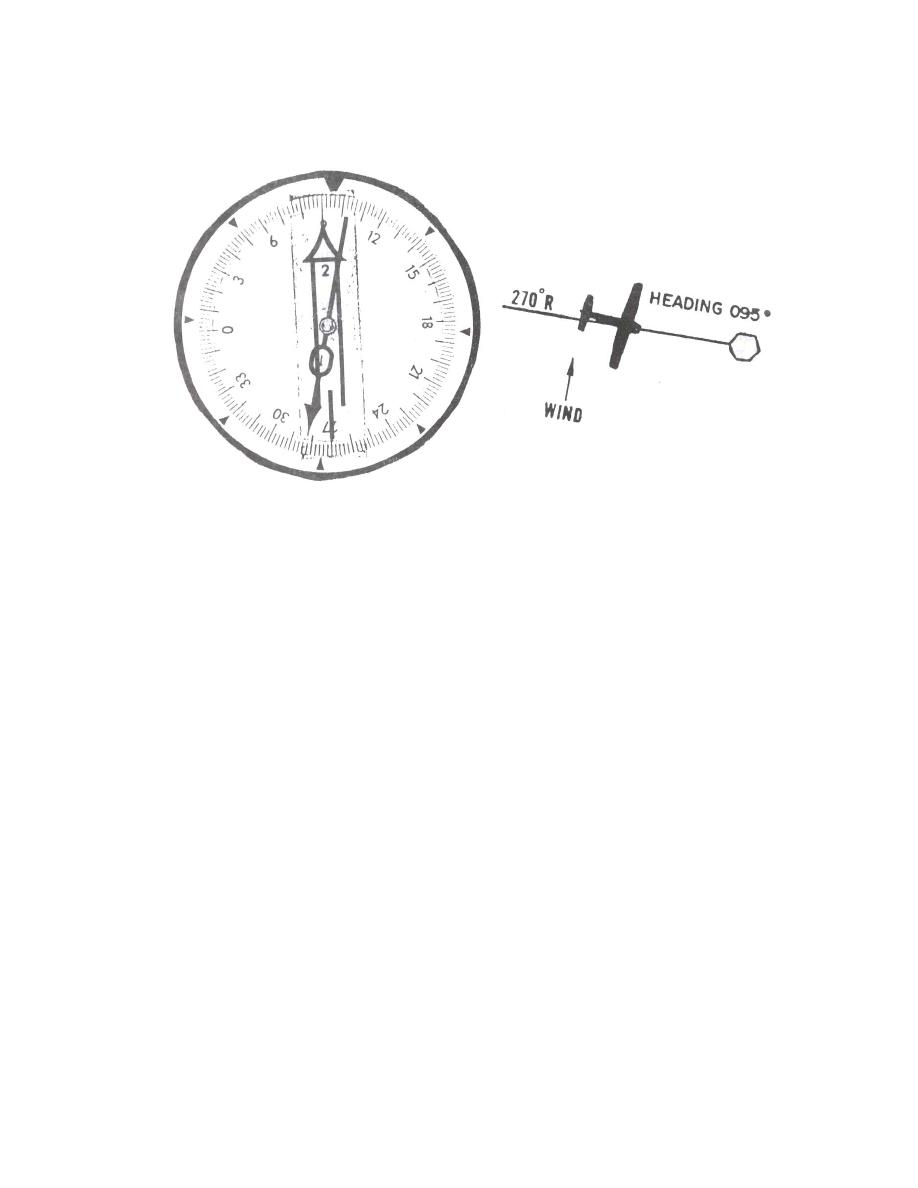 |
|||
|
|
|||
|
|
|||
| ||||||||||
|
|  INSTRUMENT NAVIGATION
In Figure 35, the aircraft is crabbing 5 into the wind (095 heading) to maintain its present
radial, 270 and its course of 090.
Figure 35
In addition to the method previously learned using the CR-2 computer, we can determine
how much actual crosswind is acting on this aircraft. It will be a function of the aircraft's true air
speed (TAS) and crab angle. Here is the procedure:
1. Take the aircraft's TAS and divide it by 60 minutes:
For example:
180 - 60
=
3 NM/MIN
240 - 60
=
4 NM/MIN
300 - 60
=
5 NM/MIN
330 - 60
=
5.5 NM/MIN
420 - 60
=
7 NM/MIN, etc.
The quotient is your TAS in NM/MIN which we will call your "guide number".
2. Now multiply your crab angle by the guide number. The product of that calculation will
be a rough estimation of your crosswind component.
Therefore, if our aircraft is crabbing 5 and our TAS is 360, then our guide number is 6 and
our crosswind component of the wind is 30 knots. This procedure can also be used in reverse to
solve for a crab with a known crosswind. Simply divide your crosswind component by your
guide number. The quotient is your crab angle.
RADIAL TRACKING AND COURSE CONTROL 3-25
|
|
Privacy Statement - Press Release - Copyright Information. - Contact Us |